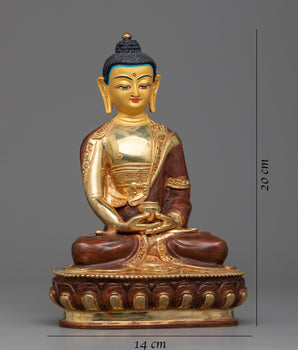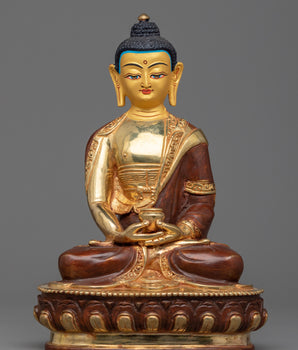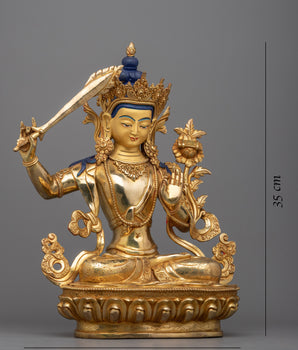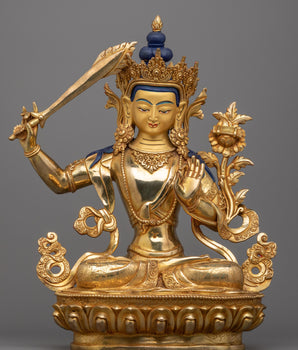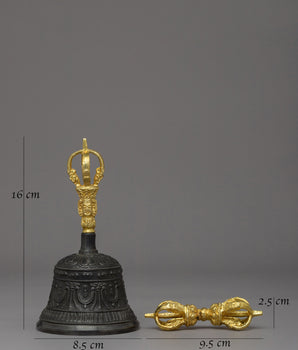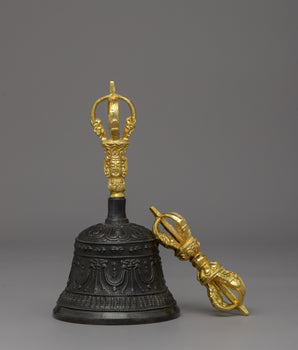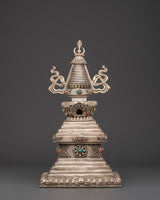
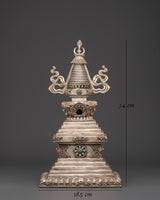
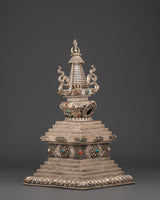
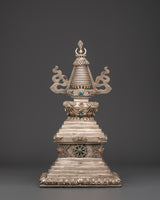
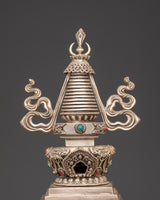
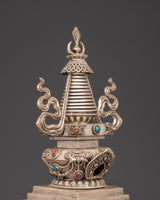
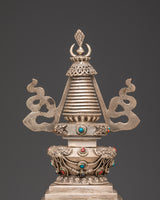
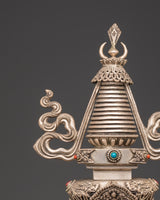
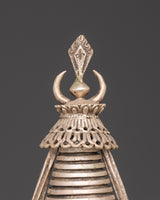
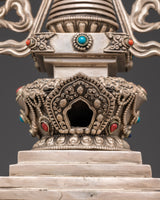
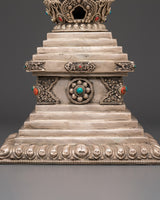
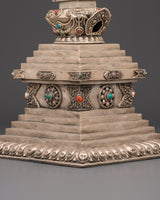
Stupa Tibetan Sacred Enlightenment Symbol | Spiritual Buddhist Shrine Statue
Handmade Stupa Tibetan Sacred Enlightenment Symbol | Copper and Silver Plated
--------------------------------------------
Size: 34cm (Height) x 18.5cm (Width)
Weight: 1.57kg
Materials: Copper, Silver Plated, Artificial Stones: Coral, Turquoise
--------------------------------------------
About The Ritual Item :
This Handmade Tibetan Buddhist Stupa Sculpture is crafted from copper and features intricate inlays of coral and turquoise (Artificial Stone). At 34cm in height, this spiritual piece is a perfect addition to any meditation room, Buddhist altar, or home decor collection. The stupa’s design is symbolic in Tibetan Buddhism, representing peace, enlightenment, and the Buddha's teachings. The Coral and Turquoise inlays enhance the energy of the piece, adding healing properties and vibrational balance to your space.
Meticulously crafted, this stupa sculpture offers both aesthetic and spiritual value. The use of copper and silver plating not only gives the sculpture a timeless, elegant finish but also brings a sense of strength and grounding. The artificial stone inlays of Coral and Turquoise are chosen for their symbolic significance—Coral represents vitality and protection, while Turquoise fosters tranquility and positive energy. This stupa sculpture serves as a powerful spiritual reminder, inviting peace, balance, and serenity into your home.
Introduction To Stupa :
Before Buddhism, great teachers were buried in mounds. Some were cremated, but sometimes they were buried in a seated, meditative position. The mound of earth covered them up. Thus, the domed shape of the stupa came to represent a person seated in meditation, much as the Buddha was when he achieved Enlightenment and knowledge of the Four Noble Truths. The base of the stupa represents his crossed legs as he sat in a meditative pose. The middle portion is the Buddha’s body, and the top of the mound, where a pole rises from the apex surrounded by a small fence, represents his head. Before images of the human Buddha were created, reliefs often depicted practitioners demonstrating devotion to a stupa.
















